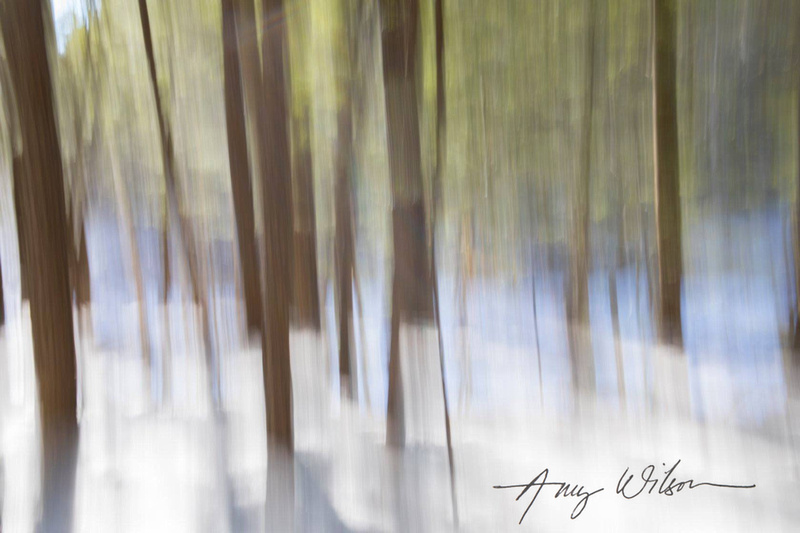ICM: Intentional Camera Movement
WHY?
ICM is another tool for purposeful expression, a tool to use in developing your personal aesthetic.
ICM takes the motion blur created with a long exposure one step further in expressive quality. It is another method of painting with light.
“It is an illusion that photos are made with the camera,
they are made with the eye, heart & head.” – Henri Cartier-Bresson
Long exposures blur motion, while keeping the non-moving structure of the photograph, the ground and any other environmental features, solid and focused. Images like those in Poetry of motion are an example of purposeful use of long exposures, during which the camera would need to be mounted on a tripod or on a solid surface to eliminate camera shake.
With intentional camera movement, we provide the movement, the expressive quality, by intentionally moving the camera.
In my own work, ICM helps me capture gesture and energy. ICM helps me create images about the essence of my subject.
Examples.






Note from these examples that they are not just blurry pictures. A strong image should still have some strong lines or focal points even if they are not in focus. The movement enhances the emotional quality of the subject. You may enhance the emotion/mood with color and depth in post-processing.
HOW?
1. Choose a subject. Look for contrasting colors and values, think about composition.
2. Set your camera.
Intentional shutter, usually 1/6” to 2”; ISO @100 for best quality; f-stop to complete exposure.
Consider a neutral density filter if photographing in bright daylight.
A longer shutter speed will soften details. A shorter shutter speed will leave more details.
3. Set your own mindset! Creating ICM images involves play and practice and experimentation to discover what works for your subject, the available light, and your own vision.
4. Play. Play with your camera movement. Different panning movements will create different lines in your image. Try moving your camera along the main lines of your subject. Adjust exposure as necessary. Play with moving your lens by zooming in or out during the exposure.
* I compare this process to fishing. You do a lot of casting to catch a big one.
RESOURCES
Andrew S Gray website and gallery, YouTube channel of instructional videos
Gray has multiple films of his shooting process, his culling of images, and his editing. In fact he edits live on Tuesday nights. *Andrews relies heavily on the post-production, shooting to ‘collect data’ for later editing.
Doug Chinnery website
Doug Chinnery blog post tutorials
Janet Powick interview and inspiration
Comments
|
January
February
(2)
March (2)
(3)
April (3)
May
(1)
June (1)
(2)
July (2)
(1)
August (1)
September
(3)
October (3)
November
(1)
December (1)
|
(4)
January (4)
(2)
February (2)
(1)
March (1)
(3)
April (3)
(2)
May (2)
(1)
June (1)
(1)
July (1)
August
September
October
November
(1)
December (1)
|
(2)
January (2)
February
(2)
March (2)
April
May
(1)
June (1)
July
(2)
August (2)
September
(1)
October (1)
November
December
|
January
February
March
April
May
June
(1)
July (1)
August
(2)
September (2)
(4)
October (4)
November
December
|
January
February
March
April
May
June
(1)
July (1)
(1)
August (1)
September
October
November
December
|
January
February
March
April
May
June
July
August
September
October
November
December
|
January
February
March
April
May
June
July
August
September
October
November
December
|
January
February
March
April
May
June
July
August
September
October
November
December
|
January
February
March
April
May
June
July
August
September
October
November
December
|
January
February
March
April
May
June
July
August
September
October
November
December
|
January
February
March
April
May
June
July
August
September
October
November
December
|
January
February
March
April
May
June
July
August
September
October
November
December
|